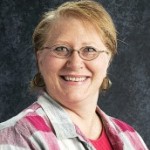This blog series provides readers with insight on the valuable content that will be shared at the upcoming Career Clusters â„¢ Institute. Guest bloggers are among teachers, faculty, researchers and other experts that will present at the national gathering in Washington, DC in June.
Michael Carey has been teaching in Business and Computer Technology areas since 1977 and is certified to teach grades K-12. Carey is a product of the Lutheran Church-Missouri Synod (LCMS) educational system and spent 14 years in parochial education in Wisconsin and, so far, an additional 21 years since in public education. Michael has been heavily involved in Career Technical Education (CTE) in Kansas since returning there in 1991.
My father, when he found out that I intended to enter into education for my career, gave me some advice. He informed me that his greatest learning experience, exclusive of serving in the army during the Korean War, took place in elementary school. Perhaps this was due to his formal educational experience having been completed at the end of the 8th grade. Nevertheless, he advised me to treat the courses and the material and the students that I would be teaching as if I were the only teacher in a one-room school house. He encouraged me to use modern technology, although I don’t believe he anticipated the multitude of tools available today, and to use modern pedagogy, a word that he first heard and learned by listening to lessons taught to the older kids in his one-room school house.
Somewhere in the not too distant past, education in America moved away from the one-room school house concept in which educators teach multiple subjects and consequently link learning across a range of topics from English to math. The approach consequently reinforced their teachings in the varied subject areas, and naturally providing a platform for integration across courses. Instead of following that model, educators began specializing in just one subject matter or curriculum. The unintended outcome of this evolution is teaching conducted in silos and learning without context.
We have all heard of and used the new “three R’s†of CTE. We strive to develop rigor, work hard to create relevance,†but somewhere along the line lost sight of the remaining aspect, relationships. Relationships revolve around integration and integration is more than just a word. Integration illustrates the understanding that an item of knowledge is related in some way to another item of knowledge, and can be applied in a range of subjects and circumstances.
Today, integration is a buzz word in education with a lot of emphasis and little application. In CTE courses in particular, we must embrace the concept of integration by designing comprehensive courses that meet core and CTE requirements.
Learn more about how you can successfully integrate core and CTE classes at the Career Clusters Institute during his session: Integration, More than Just a Word. He will be joined by Debbie Hampton, an English teacher at Central Heights High School in Richmond, Kansas. Hampton has spent 25 years in the teaching profession practicing at the middle, high school, and post secondary levels.l
Register for the Institute today!
Ramona Schescke, Member Services Manager



